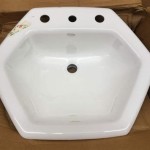What Color Light Bulb Is Best For Bathroom Vanity?
Selecting the optimal light bulb color for a bathroom vanity involves considering several factors, primarily focusing on accurate color rendering, task performance, and the desired ambiance. The color temperature of a light bulb, measured in Kelvin (K), significantly influences these aspects. A well-lit vanity area is crucial for tasks like applying makeup, shaving, and skincare routines. Therefore, choosing the right color temperature and light intensity directly impacts the effectiveness and comfort of these activities.
The decision is not merely aesthetic; it's also functional. The chosen light should accurately reflect skin tones, ensuring that makeup application appears correct in natural daylight. Furthermore, the light needs to be bright enough to illuminate the face evenly, minimizing shadows and providing clarity for detailed grooming tasks. The interplay between color temperature, brightness (measured in lumens), and the Color Rendering Index (CRI) determines the overall suitability of a light bulb for bathroom vanity use.
Understanding Color Temperature and Its Impact
Color temperature, measured in Kelvin (K), dictates the perceived warmth or coolness of a light source. Lower Kelvin values (2700K-3000K) produce a warm, yellow-toned light, often associated with relaxation and cozy environments. Higher Kelvin values (4000K-6500K) generate a cool, blue-toned light, typically perceived as energizing and suitable for task-oriented spaces. For bathroom vanities, the ideal range generally falls between these extremes to strike a balance between accuracy and comfort.
Warm light, while inviting, can distort colors and make it difficult to accurately judge makeup application. The yellow hue can mask imperfections and lead to over-application of makeup, resulting in an unnatural appearance in daylight. Conversely, excessively cool light can create a sterile and unflattering environment. The blue tint can wash out skin tones and highlight imperfections, leading to overly critical self-assessment and potentially inaccurate makeup application.
A color temperature in the range of 3500K to 4000K is often recommended for bathroom vanities. This "neutral white" or "bright white" light provides a balance between warmth and coolness, offering relatively accurate color rendering without being overly harsh. It mimics natural daylight more closely, facilitating more precise grooming and makeup application. However, personal preference and the specific design of the bathroom also play a role in determining the optimal color temperature.
The impact of color temperature extends beyond just makeup and grooming. It also affects the overall ambiance of the bathroom. A slightly warmer light can create a more relaxing atmosphere, while a cooler light can make the space feel brighter and more invigorating. Considering the intended use of the bathroom and the desired mood is essential when selecting the appropriate color temperature for the vanity lighting.
Different types of light bulbs, such as incandescent, halogen, LED, and fluorescent, offer different color temperatures. Incandescent bulbs typically produce a warm, yellow light, while halogen bulbs offer a brighter, whiter light. Fluorescent bulbs come in a range of color temperatures, but their color rendering can be inconsistent. LED bulbs are becoming increasingly popular due to their energy efficiency, long lifespan, and wide range of available color temperatures and high CRI options.
The Importance of Color Rendering Index (CRI)
The Color Rendering Index (CRI) measures a light source's ability to accurately reveal the colors of objects compared to an ideal light source, such as natural sunlight. CRI is rated on a scale of 0 to 100, with 100 representing perfect color rendering. A higher CRI indicates that the light source will render colors more accurately and vibrantly, while a lower CRI suggests that colors may appear distorted or muted.
For bathroom vanities, a high CRI is essential for accurate makeup application, skincare, and grooming. When applying makeup, it's crucial to see the true colors of cosmetics and skin tones to avoid over-application or mismatched shades. A low CRI can make it difficult to distinguish subtle differences in color, leading to a less polished and natural-looking result. Similarly, when examining skin for blemishes or discoloration, accurate color rendering is crucial for effective treatment and care.
Light bulbs with a CRI of 80 or higher are generally recommended for bathroom vanities. A CRI of 90 or higher is considered excellent and provides the most accurate color rendering. While bulbs with a higher CRI may be slightly more expensive, the investment is worthwhile for achieving optimal results in makeup application and grooming.
The CRI of a light bulb is influenced by the technology used to produce the light. Incandescent bulbs typically have a CRI close to 100, while halogen bulbs also offer excellent color rendering. Fluorescent bulbs can have varying CRI values, with some models offering poor color rendering. LED bulbs are now available with a wide range of CRI values, with many high-quality LEDs offering CRI values of 90 or higher. When selecting LED bulbs for a bathroom vanity, it's important to check the CRI rating to ensure accurate color rendering.
The combination of a suitable color temperature and a high CRI is crucial for achieving optimal lighting for a bathroom vanity. A light bulb with a neutral white color temperature (3500K-4000K) and a CRI of 80 or higher will provide accurate color rendering and a comfortable, flattering light for makeup application, skincare, and grooming. This combination helps ensure that the results achieved in the bathroom will translate accurately to other environments and lighting conditions.
Brightness (Lumens) and Light Distribution
Brightness, measured in lumens, refers to the total amount of visible light emitted by a light source. For bathroom vanities, adequate brightness is essential for illuminating the face evenly and minimizing shadows. Insufficient brightness can make it difficult to see clearly, while excessive brightness can cause glare and discomfort. The appropriate lumen output depends on the size of the vanity area, the number of light fixtures, and the desired level of brightness.
Generally, a total lumen output of 400-800 lumens per light fixture is recommended for bathroom vanities. This range provides sufficient brightness for most tasks without being overly harsh. However, the specific lumen output may need to be adjusted based on the size and configuration of the vanity. For larger vanities or those with multiple users, a higher lumen output may be necessary. Conversely, for smaller vanities or those with limited natural light, a lower lumen output may be sufficient.
In addition to lumen output, the distribution of light is also important. Ideally, the light should be distributed evenly across the face to minimize shadows and provide consistent illumination. Sconces mounted on either side of the mirror are a popular choice for bathroom vanity lighting, as they provide balanced illumination and minimize shadows. Overhead lighting can also be used, but it's important to ensure that it does not cast harsh shadows on the face. Diffused lighting, such as frosted glass or fabric shades, can help to soften the light and reduce glare.
The type of light bulb also affects the light distribution. LED bulbs are available with different beam angles, which determine the spread of the light. A wider beam angle will distribute the light more broadly, while a narrower beam angle will focus the light on a smaller area. For bathroom vanities, a wider beam angle is generally preferred to provide even illumination across the face. The positioning of the light source also impacts the distribution. Placing the light source too high above the mirror can create shadows under the eyes and chin, while placing it too low can cause glare.
Layering light sources is a technique that involves using multiple light fixtures to create a more balanced and flattering lighting scheme. In a bathroom vanity area, this might involve using sconces for task lighting, overhead lighting for general illumination, and accent lighting to highlight specific features. Layering light sources allows for greater control over the brightness and distribution of light, resulting in a more comfortable and functional space.
The choice of light fixture can also influence the perceived brightness and color rendering of the light. Fixtures with reflective surfaces, such as chrome or polished nickel, can amplify the light and make the space feel brighter. Fixtures with tinted glass or fabric shades can alter the color temperature and CRI of the light. It's important to consider the impact of the light fixture on the overall lighting scheme when selecting light bulbs for a bathroom vanity.

What Is The Best Lighting For A Bathroom Vanity And Makeup Supply

How To Light A Bathroom Lightology

Best Bathroom Lighting Solved Bob Vila

Color Temperature For Bathroom How To Have The Best Lighting Blisslights

Ask Wirecutter How Do I Improve The Lighting In My Dingy Bathroom

Bathroom Lighting Ideas For Bathrooms Of Every Size
Bathroom Lighting Tips 4 Things You Need To Know

Get Rid Of That Yellow Tone With This Quick Change To Your Light Bulbs We Couldn T Believe The Diff Bathroom Best Lighting Daylight

How To Light A Bathroom Lightology

What Is The Best Color Light For A Vanity Mirror Ledmyplace
Related Posts







